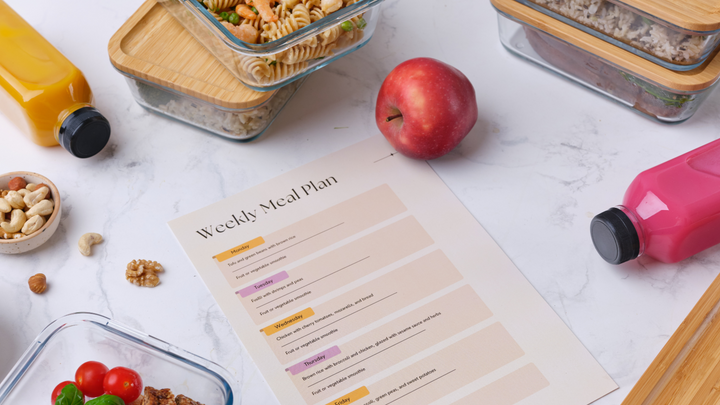CHEESESLAVE Q & A: January 23, 2011
From now on, every Sunday, I will be answering your questions. I’ll answer as many questions as I can each week.

Welcome to the first installment of CHEESESLAVE Q & A!
From now on, every Sunday, I will be answering your questions. I’ll answer as many questions as I can each week.
If I didn’t answer your question this week, please check back next week. Be sure to sign up for my email updates so you never miss a post:
Enter your email address:
Submit Your Question
If you have a question to submit, please email it to me at questions@cheeseslave.com.
If you have an URGENT question that you can’t wait to get answered, please post it on my Facebook page. I tend to get on Facebook pretty much daily. I can’t promise to answer all the questions on Facebook, but I try! (Note: Do NOT email me on Facebook — I can’t get through my email on there!)
Palm Oil — Good or Bad?
My question is on palm oil — is it good or bad? Over the last year, as I have made the switch from vegetable oil to using coconut oil and other good fats, I have been using palm oil which I bought through Tropical Traditions since I don’t yet have a good source for lard (since it makes a great substitute for shortening).
In addition, I am an avid label-reader, and on the rare occasions that I do buy something processed or pre-made, I try very hard not to buy something made with vegetable oil. Which was why I was so excited to find that Whole Foods actually has crackers made with palm oil (the ONLY brand I’ve seen that uses palm oil rather than canola or other vegetable oil).
However, I have seen some bloggers mention how horrible palm oil is (seemingly for environmental reasons? I haven’t really researched the topic), but then recently saw you mention palm oil in a more positive light (can’t remember the post, but it did make me wonder if you thought it was okay). It does seem like there are some VERY strong opinions out there on the subject, but I’m not really clear on why it is seen in such a negative light.
Just wondering what your thoughts are on this, thanks!
— Robin
Hi, Robin!
Great questions! I have a lot to say on this matter.
First of all, I have seen a few different brands of crackers and cookies at Whole Foods, and yes, I buy them, too. In fact, I have some Wasa crackers that I really love that are made with palm oil.
Palm oil is a very healthy oil, as long as it is not hydrogenated. You can read the label to find out if the palm oil is hydrogenated. If it is, don’t eat it.
As far as the environment is concerned, there are many issues regarding the environmental sustainability of palm oil.
One of the issues is that large palm oil companies are clearcutting land to produce more crops. You can read more about the environmental impacts of palm oil in this article on Wikipedia: Environmental Impact of Palm Oil.

The problem is that big food companies have to save money on ingredients in order to compete. It would be hard for a huge food corporation to use a truly sustainable fat — for example, grass-fed butter from small farms. Partly because their competitors are using cheaper oils and fats — and also because let’s face it, most people who are brainwashed to eat low-fat don’t want butter in their crackers.
What’s the solution? Like any food we buy, we need to know the grower. Any time you buy an industrial food that comes from a huge multinational corporation, or that uses ingredients from a multinational corporation, you just don’t know what you are getting.
The best choice is to make your own crackers with grass-fed butter from small farms and freshly sprouted, freshly ground whole grain flour. It’s so easy to make your own crackers. Here’s my recipe: Sprouted Whole Wheat Crackers. (My recipe also uses coconut oil — I buy a brand of coconut oil that is sustainably produced.)
I’m very busy these days and have little time to spend in the kitchen. So I’ve started asking our housekeeper to make sprouted flour crackers for us. She does it every couple weeks — and it keeps us in crackers!
That said, when we run out, I like to have cracker back ups.
There’s another brand of cracker called Ak-Mak that I often buy from Trader Joe’s — we like them just as much as the Wasa brand. And they are made with butter and sesame oil. Since I usually go to TJ’s, it’s easy for me to pick up Ak-Mak, and that is what I will buy unless for some reason I really need crackers and don’t want to run to two different stores.
Does this mean I will stop buying my Wasa crackers with palm oil? No. I will still buy them on occasion. But I buy Ak-Mak when I can. I do the best I can, but I’m not perfect. And I don’t think any of us should strive for perfection.
I also want to share with you this quote from Sally Fallon Morell regarding palm oil and the environment:
Palm oil comes from the palm fruit, a highly oily fruit, which is basically the olive oil of the tropics, a healthful, stable oil, mostly saturated and monosaturated. Only a low level of technology is required to get the oil out of the fruit. We have been advocating for years the use of palm oil in processed foods, which is not to say we advocate processed foods, but if an industrial oil is to be used, the most healthful one is palm oil.
I don’t like the fact that it’s being grown in big plantations any more than I like the fact that olive oil is being grown in big plantations. But the most environmentally destructive oil is soybean oil. Our entire Great Plains area has been sacrificed to soybeans—for margarine and shortening and salad oil. If you have a choice of buying a cookie that’s made with palm oil or soybean oil, you’ll want the cookie with palm oil. On the environmental level it’s probably the same as any of the other industrial oils.
I think the goal insofar as palm oil is concerned is the same as for any commercial oil: to make sure we’re using the healthful ones. That means olive oil, palm oil, and coconut oil. We need to figure out some way for them to be produced on a small scale, and that is definitely going to be the hardest to do in the case of palm.
Butter and Trans-fat?
My question is about butter and trans-fat. It is repeated inNourishing Traditionsand other book and in the media that trans-fat is bad and should be avoid, but it is found in butter and other dairy. But NT says butter is a good fat, so I’m confused, is there a difference between the trans-fat found in butter and the trans-fat found in hydrogenated vegetable oils or are they the same thing?
— Bonnie
This question was already answered on the blog by reader, Amy B., who really said it all — thanks, Amy!
“You might be referring to the *naturally occurring* trans fats in truly pastured dairy products, especially butter. This is CLA, “conjugated linoleic acid,” and many studies have shown it to be beneficial to health as well as fat loss — specifically around the belly and hips.
“While this is technically/chemically a “trans fat” it occurs naturally in ruminant animals consuming species-appropriate diets (i.e., cows on grass). The trans bonds are not created because of wacky/dangerous chemical processes in a lab or factory.
“CLA is not just in dairy, though. You’ll also find it in the meat from pastured ruminant animals. I’ve heard that meat from feedlot animals will also contain some CLA, but nowhere near as much as if they were on grass/hay.
“Like so many other nutrients, modern diets are woefully lacking in CLA. There are supplements out there, but I think they mostly come from seed or some type of vegetable oils. Seems to me that if you’re eating mostly grass-fed beef and dairy, you probably don’t need supplementation, especially if your intake of omega-6 from vegetable oils is generally low.”
— Amy B.
Click here to read more about CLA on Wikipedia.
Germinated Brown Rice and Beef Suet?
1. I saw some germinated brown rice at my local Costco last week and was wondering if that might be a good alternative for those people (like myself) who aren’t quite organized enough to soak rice ahead of time?
2. I bought some beef suet from a local butcher. Can I cook with that as-is, or do I need to render it first? And why do some fats need to be rendered?
— awiesner
Germinated brown rice is essentially soaked rice. According to Wikipedia:
A nutritionally superior method of preparation using GABA rice or germinated brown rice (GBR) (also known as Hatsuga genmai in Japan), developed during the International Year of Rice, may be used. This involves soaking washed brown rice for 20 hours in warm water (38 °C or 100 °F) prior to cooking it. This process stimulates germination, which activates various enzymes in the rice. By this method, it is possible to obtain a more complete amino acid profile, including GABA.
However, soaking rice is not the same as fermenting it. According to Stephan of the Whole Health Source blog, soaking rice does very little to reduce the phytic acid.
In this post, Stephan explains how he soaks (ferments) his brown rice. (I’ve started doing mine that way, too!)
I buy sprouted rice online. You can find it on my resources page (it is a new product from To Your Health Sprouted Flour): https://villagegreennetwork.com/marketplace/flours-grains-legumes?pid=1″ target=”_blank”
Ideally, you would want to sprout and ferment your rice, but doing one or the other is pretty good. But I’m not sure if plain soaked rice (germinated) is worth it.
On to the beef suet…
Beef suet (or fat) does need to be rendered. According to Wikipedia:
Rendering is a process that converts waste animal tissue into stable, value-added materials. Rendering can refer to any processing of animal byproducts into more useful materials, or more narrowly to the rendering of whole animal fatty tissue into purified fats like lard or tallow. Rendering can be carried out on an industrial, farm, or kitchen scale.
If you’ve ever seen beef fat, it’s just a big hunk of white fat. I don’t know what you could use it for as is. Eating it would be pretty nasty.
When you render it, you let it melt down into a liquid and you discard the solids. Rendered beef fat (or tallow) can be used for frying or baking.
Here’s my post on How to Render Beef Tallow.
Water Kefir Grains?
I have a question about water kefir grains. When I first got them they were beautiful and clear, almost like shattered glass. But now they are opaque and a sort of pink color. I usually put in some spring water, raw sugar and dried fruit (mostly figs, but occasionally cranberries, dried blueberries, raisins or dried apples). I have also added, but only on a few occasions, a slice of ginger or lemon, and twice, a well rinsed egg shell. I’ve read that it might be because of mineral overload and that using refined white sugar might help.
So the past few weeks, I’ve been using refined sugar, and only putting a dried fig in it every other time. It does finally seem to be proliferating now, though only a little. But the color still hasn’t changed. It still seems to be working and making delicious water kefir, but the grains just don’t look right and I’m worried that this is a sign that I’m doing something wrong.
Is this normal?
— Michele
Well, I don’t know about “normal”. After all, fermentation is an art, not an exact science.
I have found water kefir grains to be rather finicky — at least much more so than kombucha, or even dairy kefir grains. I don’t seem to be able to kill my dairy kefir grains, and my kombucha scoby is absolutely indestructible. My water kefir grains are a bit more delicate.
Part of my problem is that I don’t ferment my water kefir often enough. I do it infrequently — because we tend to have more than enough kombucha to drink. So my water kefir grains are a bit tired.
I do think yours might have gotten a bit down-in-the-dumps because they weren’t getting refined sugar. Mine do tend to do better on refined white sugar (we only keep the white sugar in the house for kombucha and water kefir).
Another thing that I’ve heard that really helps is pineapple juice or other fruit juice. One of these days, I’ll give it a shot — put my water kefir grains in some pineapple juice with refined white sugar.
I also use an egg shell to impart minerals to the kefir grains.
Note: to revive tired kefir grains, it may take a week or more of daily fermenting. Give it some time and see if the juice and white sugar help.
Best Fermented Foods for Beginners?
For those with very sensitive guts/bodies, what would you recommend in the way of fermented foods that are very gentle and typically tolerable by most?
I guess I ask as my first foray into ferments by way of sauerkraut was “interesting‚” shall we say! I think it may have been the high sulphur/amines/histamine that put my body in a bit of a spin! Rather than abandon my testing, I was wondering if something more tolerable might be possible to start with.
— Matt
If your gut still needs a lot of healing, it’s best to go slow with the fermented foods. Some people can only handle a teaspoon of sauerkraut per day (you can just use sauerkraut juice if you like) at first. Slowly add a little more each day, until you can tolerate it.
As far as which fermented foods are the easiest to digest, I would say sauerkraut, kimchi, kombucha, water kefir — anything of vegetable or fruit origin. If you have dairy allergies, I’d steer clear of dairy-based ferments in the beginning.
Of course, you should be doing an elimination diet, a la GAPS — https://www.gapsdiet.com — in order to heal your gut. If you are trying to heal your gut and you’re still eating things you are incapable of digesting (i.e., dairy or gluten, or whole grains or sugar), you won’t recover very fast, if at all.
Studying Nutrition?
I am looking at the possibility of returning to school to become a nutritionist in 2 to 3 years, when both of my children will be graduated from homeschool. As a nutritionist who adheres to the principles of Weston A. Price, which schools/programs would you recommend (I would need to complete it online or through correspondence)? I do not feel the need to become a dietitian, largely because my research has led me to believe that the nutrition education for that is quite outdated. I am more interested in helping people than I am of developing a grand career within the mainstream medical model.
My husband and I have spent some time in South Africa working with AIDS orphans and malnutrition is a huge factor with that population group (as with most poor South Africans). We are very open to returning with a (hopefully) greater skill set that would enable us to accomplish more. I love learning about nutrition for its own sake, but I think to increase my knowledge could contribute further to helping children and others suffering from malnutrition and the many related effects of that (stunted growth, impaired immunity, decreased cognitive function, etc…).
— Jill
Wonderful! We need more people like you out there helping people.
I think this post on the Weston A. Price Foundation website by Dr. Kaayla Daniel will answer your questions: FAQ: Studying Nutrition
Artisan Bread vs. Soaked Bread?
I am on GAPS right now (it’s been 7 months) and so obviously I am not eating bread. But I have a question concerning the technique that I have been using in the past and hope to use again once we are off GAPS.
I was using the Artisan Bread in 5 Minutes a Day method. Are you familiar with it?
Basically, they describe their method as a lazy sourdough… because you mix the flour, water, salt and yeast (don’t knead) and then store it in the fridge for up to 2 weeks… You make a huge batch and take the dough as you need throughout the week.
So my question is: Does this method seem appropriate for preparing grains? The dough is left slowly fermenting in the fridge and has a light sourdough taste when baked. Obviously, this is not anything like soaking, sprouting, dehydrating and grinding but could it be considered soaked flour? I love how EASY this method is and I was baking bread for a lot of my friends before GAPS.
Just wondering what your take on this method is, nutritionally speaking.
— Natalia
Hi, Natalia. Great question!
Yes, I am familiar with this method and yes, you could say it is a form of soaked bread. Kind of.
The problem with their method is they are using commercial yeast.
As you probably know, whole grains are preferable to refined grains because refined grains have very little nutrients remaining. However, whole grains contain anti-nutrients including phytates and enzyme inhibitors.
Phytates bind with calcium, zinc, iron, magnesium and other nutrients and actually block absorption of these nutrients. Soaking, sprouting and/or fermentation of grains reduce the content of phytates and enzyme inhibitors.
Sourdough fermentation reduces the phytate content to a much greater extent than yeast. Bread made with whole grain flour and commercial yeast leaves the phytates and enzyme inhibitors mostly intact, which greatly reduces the nutrients available from the bread.
There are other problems with rapid rise breads made with commercial yeast, related to gluten and starch. Here’s an excerpt from an excellent article I found that explains it very well:
There are two other problems with rapidly made bread: gluten, which comprises about 80% of the protein in wheat, and starch digestion. Gluten is found in the endosperm complexed with starch, and is what gives yeast bread its elasticity, or ability to rise. In fact, extra gluten is often added to yeast bread for this purpose. A far greater amount of gluten is now present in regular yeast breads, both white and whole grain, since it is found in the endosperm, possibly leading to the steep rise in gluten intolerance that has occurred recently. Only when wheat gluten is properly broken down into amino acids by fermentation is it healthy for human consumption. If not, it is potentially one of the most highly allergenic foods we eat, since it can pass whole into the blood. During sourdough bread-making gluten is hydrolyzed by proteases during the acidification that occurs from the microorganisms that are present in sourdough culture. Gluten is not so important for structure in fermented breads as it is in ‘regular’ bread. The increased contents of water-soluble polysaccharides (chains of sugar molecules) in sourdough fermented bread dough compared to straight dough contribute to the water absorption and gas retention (rising) capacities of the dough, as observed in rye baking.
The other aspect of regular yeast breads compared with sourdough is the body’s reaction to the starch. Being finely ground, the starch in both white and whole wheat bread is quickly broken down into glucose in the digestive tract and absorbed into the blood stream, causing a rapid rise in blood glucose and resultant insulin. It has been shown that the acids formed during sourdough fermentation retard the outpouring of glucose into the bloodstream and lower the insulin response. (Source)
Now, can you use the Artisan 5 Minute a Day method with sourdough starter instead of commercial yeast? Although I haven’t tried it yet, I don’t see why not. I have made beautiful no-knead sourdough bread (click for the recipe). But I haven’t let it ferment in the fridge like that. I’m anxious to try it!
A friend of mine makes sourdough pizza dough in this fashion. We also have a baker here in Los Angeles who ferments his bread dough for up to a month in the fridge.
I’ll be teaching a class on preparing grains this April. I will be sure to incorporate this method into my class. It will be fun to experiment with it!
Got a Comment?
I don’t claim to have all the answers. And I love hearing from you guys! If you have feedback on any of the above questions and answers, please share your thoughts n the comments below.
Got a Question?
Please submit your questions to questions@cheeseslave.com. I’ll answer your questions every Sunday in the order I receive them.
Photo credit: Sirwiseowl on Flickr



Comments ()